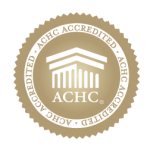A stroke happens when there is a loss of blood flow to part of the brain. Then brain cells cannot get the oxygen and nutrients they need from blood, and they start to die within a few minutes. This can cause lasting brain damage, long-term disability, or even death.
There are two types of strokes:
- Ischemic stroke is caused by a blood clot that blocks or plugs a blood vessel in the brain. This is the most common type; about 80% of strokes are ischemic.
- Hemorrhagic stroke is caused by a blood vessel that breaks and bleeds into the brain
Another condition that’s similar to a stroke is a transient ischemic attack (TIA). It’s sometimes called a “mini-stroke.”
Certain factors can raise your risk of a stroke. The major risk factors include:
- High blood pressure. This is the primary risk factor for a stroke.
- Diabetes.
- Heart diseases. Atrial fibrillation and other heart diseases can cause blood clots.
- Smoking. When you smoke, you damage your blood vessels and raise your blood pressure.
- A personal or family history of stroke or TIA.
- Age. Your risk of stroke increases as you get older.
- Race and ethnicity. African Americans have a higher risk of stroke






